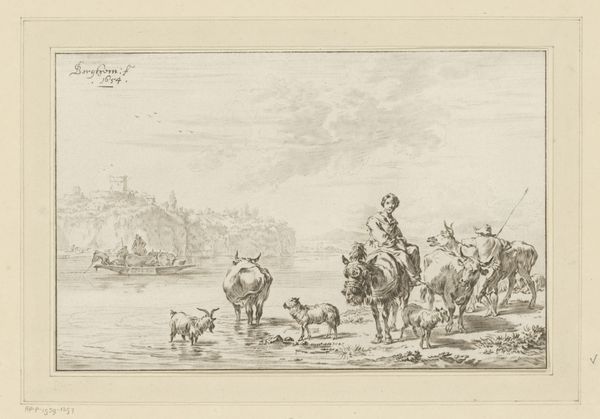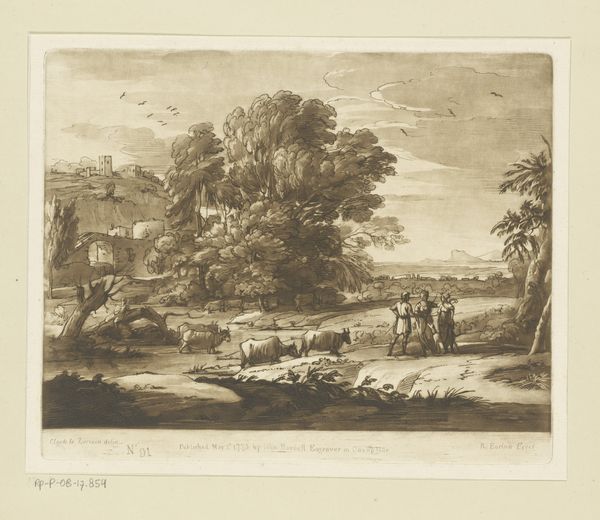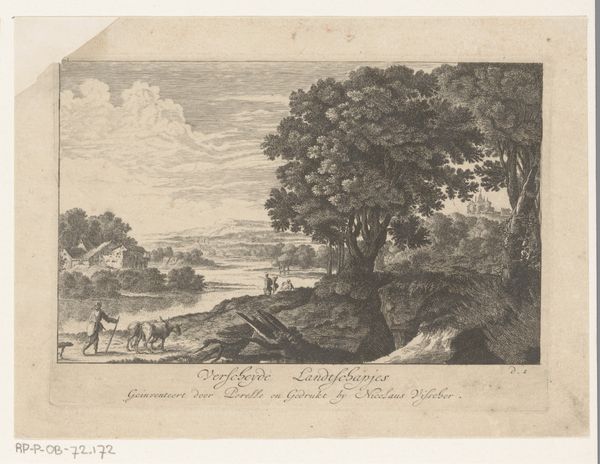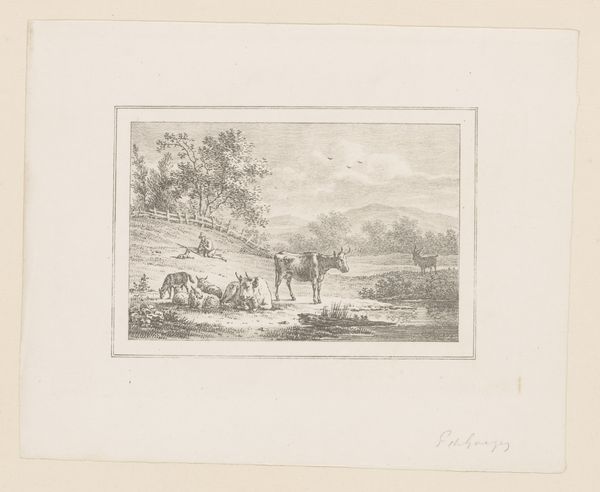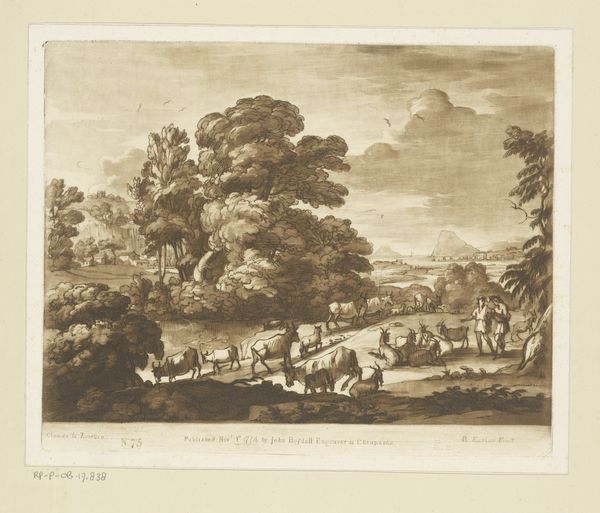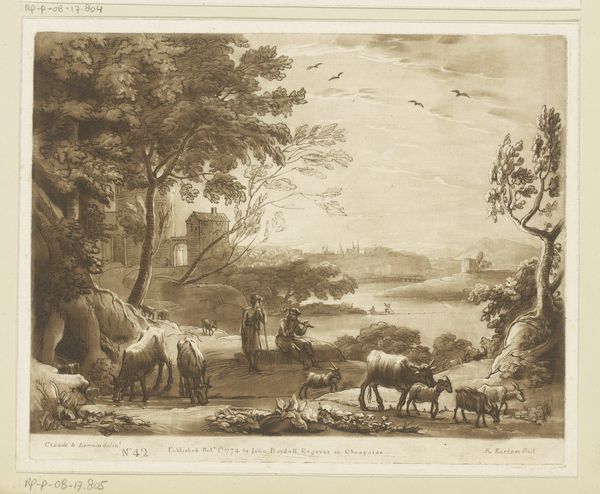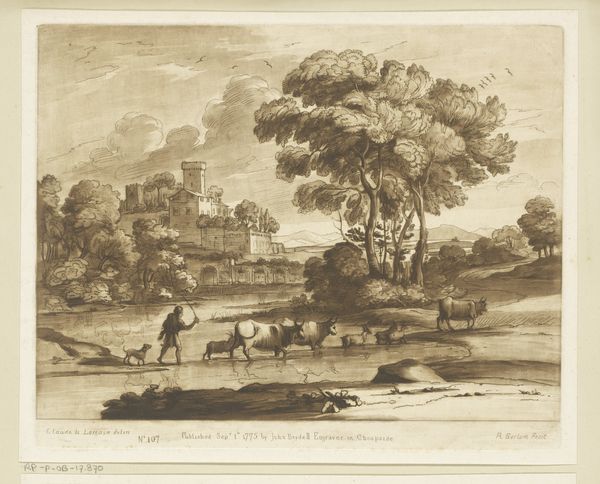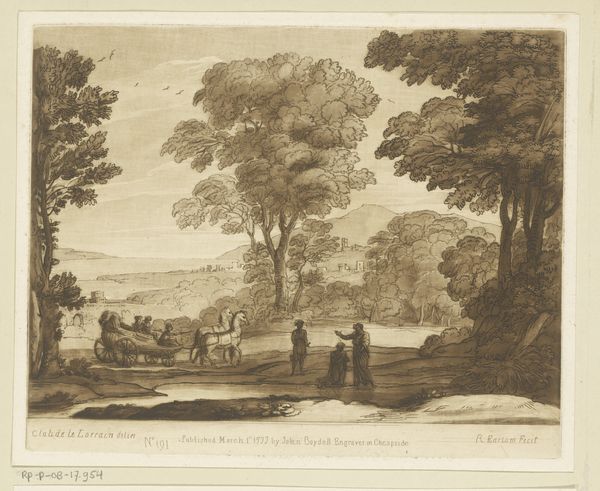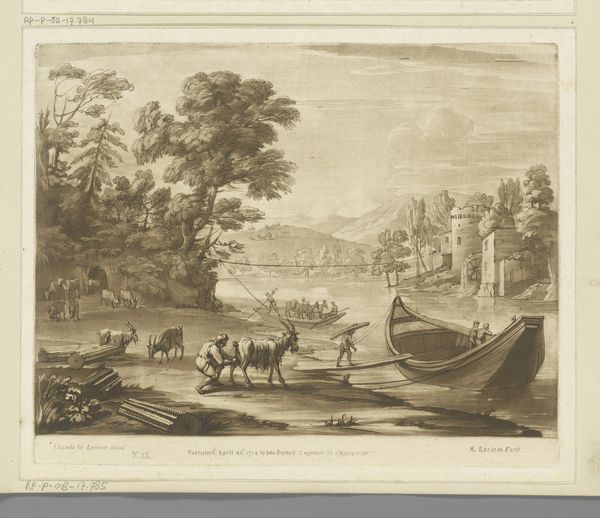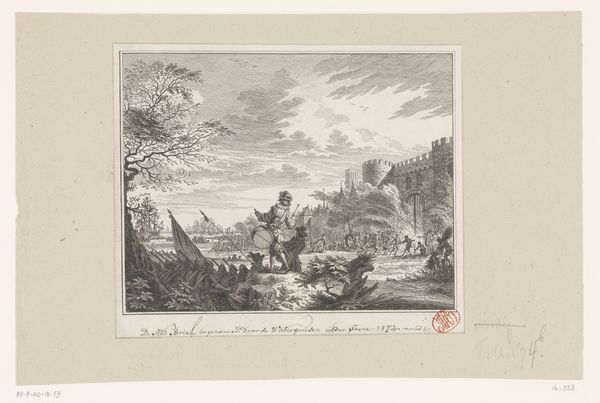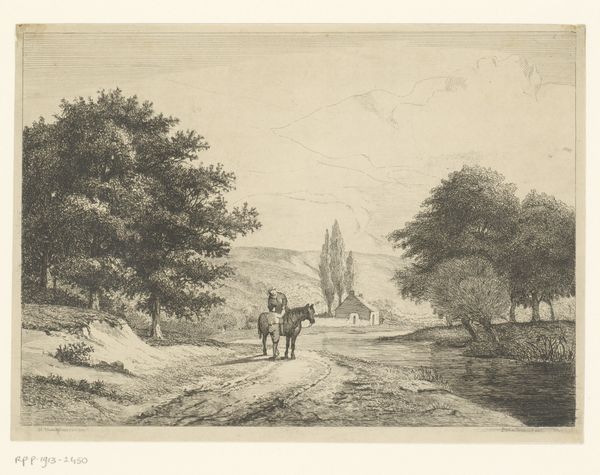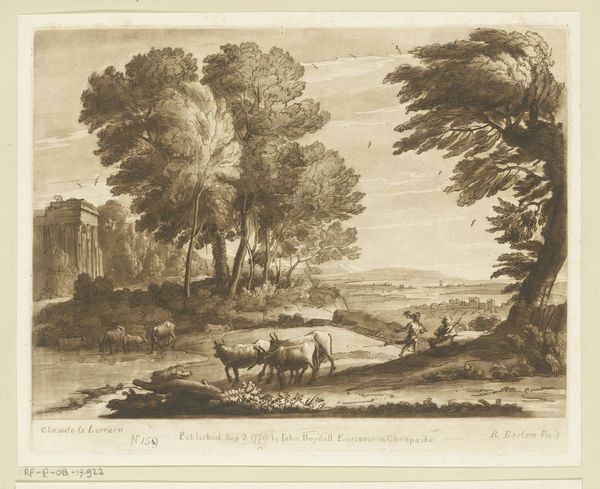
Dimensions: height 188 mm, width 242 mm
Copyright: Rijks Museum: Open Domain
Curator: Ah, yes. This is "Mediterraan rivierlandschap met herders," or "Mediterranean River Landscape with Shepherds," attributed to François Philippe Charpentier. The print combines etching and engraving and dates from somewhere between 1744 and 1817. Editor: It evokes such a peaceful mood! The light sepia tones create this beautiful soft haze over the entire scene, really harmonizing the textures of the water and figures crossing it. Curator: Absolutely. Note how Charpentier, working within established conventions, uses this idyllic scene to evoke a particular vision of rural life—likely intended for an urban audience far removed from such realities. The figures are neatly arranged and actively posed to evoke serenity rather than documentary realism. Editor: The linearity, though, provides an anchor, especially the parallel lines of the water rippling against the grounded and sure movements of the animals—this emphasizes its grounding in a landscape. You know, almost baroque but not overly dramatic. Curator: Baroque sensibilities certainly linger, especially if we think about the political and economic upheaval in Europe during Charpentier's time. Genre paintings such as this offered an idealized, almost nostalgic escape. We should not forget the influence of aristocratic patronage either in the art world, as images of the countryside also evoked ideals tied up with land ownership and power structures. Editor: Good point. If you examine the balance across the landscape—the eye flows along the soft lines toward the structure resting atop a distant cliff and blends smoothly with the clouds above—very clever technique for holding the gaze. The placement of each of the animals creates a solid, almost mathematical, pictorial depth. Curator: Indeed. Considering the history of the landscape genre, Charpentier's composition partakes in the aesthetic values tied with the 18th century while nodding to older modes and values that reinforced social hierarchies. Editor: Agreed. Looking again, what strikes me most is how well he captures such tranquility, making this landscape feel timeless. Curator: Ultimately, Charpentier’s print gives us a compelling snapshot into the idealized version of the pastoral, serving particular social needs of its historical moment.
Comments
No comments
Be the first to comment and join the conversation on the ultimate creative platform.
